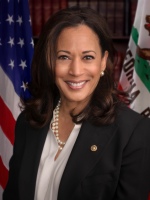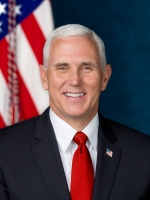
Previously published at GBH News.
At the dawn of the Trump presidency four years ago, the journalist James Fallows offered a prescription for overcoming the anger and divisiveness that had given rise to Donald Trump’s toxic brand of right-wing populism: a renewed engagement with community life.
“At the level of politics where people’s judgments are based on direct observation rather than media-fueled fear,” Fallows wrote in The Atlantic, “Americans still trust democratic processes and observe long-respected norms.”
Fallows and his wife, Deborah Fallows, later wrote an entire book on the topic. But their advice was not heeded. President Trump sucked up every bit of oxygen and energy, from the Resistance to impeachment, from COVID and economic collapse to his racist rhetoric, his cruel policies and his sociopathic Twitter feed.
“We need a world in which we talk less about the president,” lamented Cardozo School of Law professor Ekow Yankah last week. “It’s not healthy.” That Yankah was being interviewed on a podcast called “Trumpcast” suggests the depth of the problem. Even now, Trump is dominating the news to a far greater extent than President-elect Joe Biden — and not in a good way. Rather than living locally, we spend all our time thinking nationally. It’s exhausting and leaves us feeling angry and alienated.
Our media in many ways are a reflection of our politics. The Trump years were very good for national news organizations like The New York Times, The Washington Post, NPR and, God help us, cable news, especially Fox. And they were very bad for local media, especially community newspapers.
To renew civic life, you first need to renew local, independently owned newspapers and other media. I’m not talking about major regional newspapers, public radio or local TV newscasts. I’m talking about the hard but rewarding work of keeping tabs on city councils, school committees, zoning, police, development, neighborhoods and racial justice.
“There is a direct correspondence between the closing of newspapers and the polarization of people formerly served by those newspapers,” wrote Marc Ambinder, a senior fellow at the USC Annenberg Center for Communication Leadership and Policy, in a recent essay for MSNBC.com. He added: “If we want a society where we can accurately understand the preferences and behaviors of everyone, we need more local journalism.”
Unfortunately, it has become nearly impossible to pay for such journalism. The causes are familiar, from the collapse of digital advertising for everyone except Google and Facebook to the rise of corporate and hedge-fund ownership that bleeds local newspapers dry.
The COVID pandemic has made the financial situation facing news organizations that much worse. According to CNN reporter Kerry Flynn, two major publicly traded chain newspaper owners, Gannett and Tribune Publishing, are near collapse. Gannett’s ad revenues were down 38% in the second quarter over the previous year and down 23% in the third quarter. Tribune was down 48% in the second quarter and down 38% in the third.
Between them, the two companies own hundreds of local papers that had been hollowed out even before the pandemic. And unlike national papers like the Times, the Post and The Wall Street Journal, these companies have barely gotten started on charging readers for digital access.
So what is to be done? As I’ve written a number of times previously, I think we need a variety of solutions; one approach is not going to work in every community. For-profit, nonprofit, cooperative ownership, even volunteer-driven projects are all doing good work in cities and towns across the country. But they remain the exception, and the overall picture continues to darken.
Rick Edmonds of Poynter reported recently that Congress is considering a number of ideas, including tax credits for subscribing to a local news source, tax relief for publishers, advertising subsidies, and an antitrust exemption that would allow the news business to negotiate as one in an attempt to extract some revenues from Google and Facebook.
“Congress has pretty much decided it should come to the aid of local news,” Edmonds wrote. “The question of how remains, together with making the help timely.”
In Massachusetts, a bill that would create a special commission of journalists, academics and legislators to study the extent of the local-news crisis has gotten bogged down in committee, though I’m told that it could pass before the end of the year. (Disclosure: I’ve worked on the measure with state Rep. Lori Ehrlich, D-Marblehead, and would be a member of the commission.)
Needless to say, a commission isn’t going to fix what’s ailing local news. Yet if we’re going to have any chance of revitalizing civic engagement and closing the chasm that has come to separate us, we need to find a way.
In late October, The Inquirer and Mirror of Nantucket announced that the longtime editor and publisher, Marianne Stanton, along with a local businessman named David Worth, were buying the paper back from Gannett, which had owned it for a number of years.
“I think it’s pretty cool that two Nantucketers, both descendants of the early settlers, could work together to pull this off,” said Stanton in the announcement.
I think it’s pretty cool, too. It’s hard to know what, if anything, it will lead to. But it was a step in the right direction as well as very good news for the civic life of one community. Maybe it will be the start of something.
And share your thoughts here in the comments.








